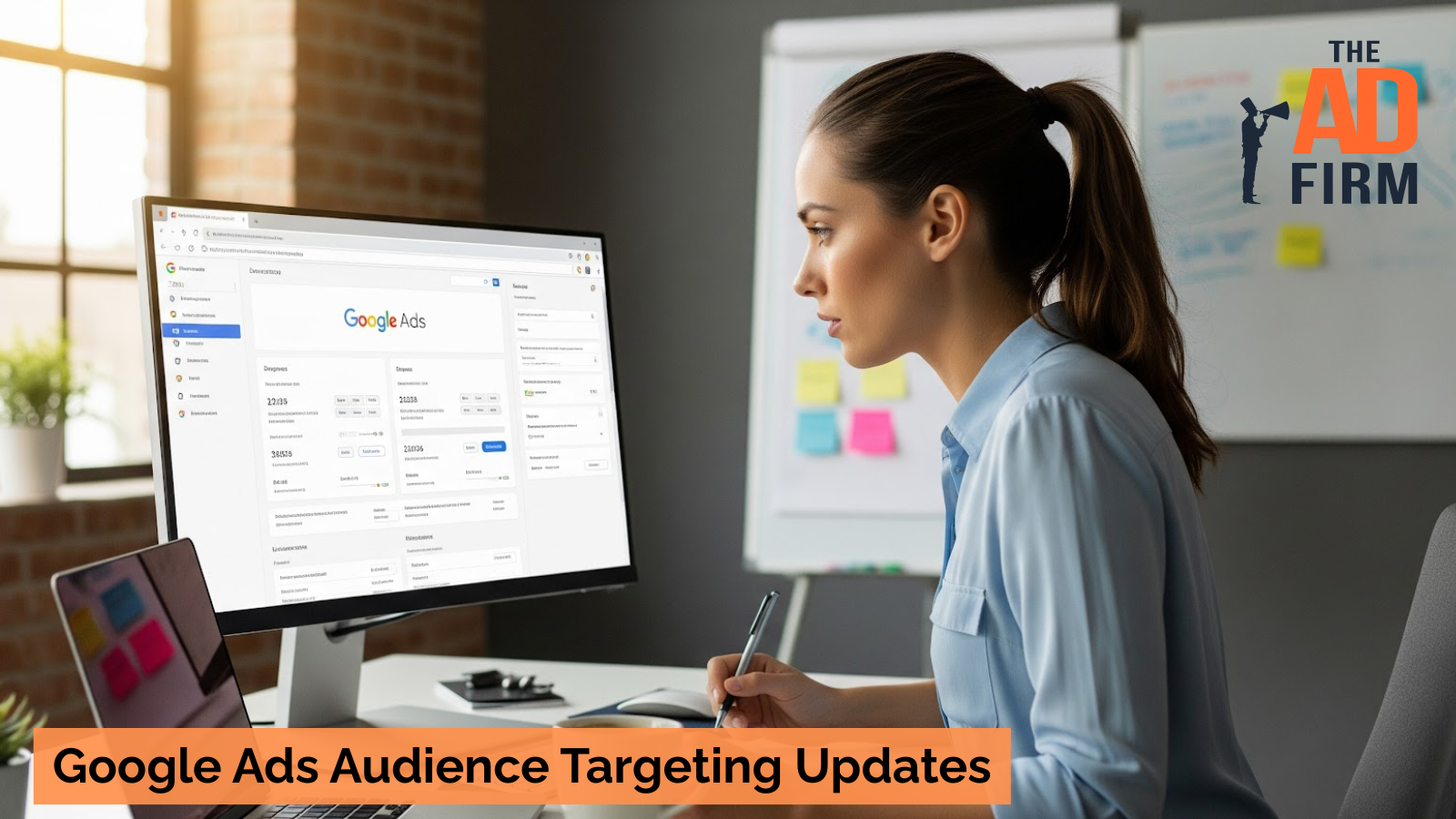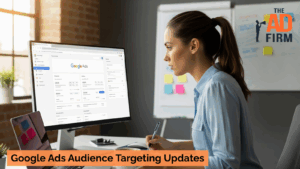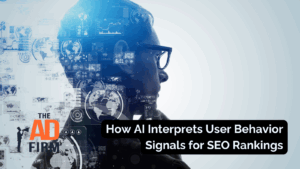Running ads online has never been more critical, but it can also feel more complicated than ever. In 2025, Google Ads is shifting toward automation, AI-powered targeting, and tools that reshape how businesses connect with potential customers.
Even if you’re not an expert or working with a PPC agency, knowing the latest updates helps you make smarter choices and avoid wasting money on ads that don’t deliver.
What’s New in Google Ads Audience Targeting
Google Ads has introduced new features in 2025 that change how advertisers can connect with the right audiences. These updates give businesses more control, better creative tools, and smarter ways to use their own customer data without needing advanced technical knowledge.
Performance Max Enhancements
Performance Max has become the central campaign type in Google Ads, combining multiple ad placements into one. The 2025 updates focus on giving advertisers more ways to guide performance while still relying on automation.
- Negative keyword lists for control: Advertisers can now block ads from showing on searches that aren’t relevant. This prevents wasted clicks from people who were never likely to buy. For businesses, it means budgets can be spent on higher-quality traffic. More precise targeting translates into more efficient results.
- Device targeting options: Campaigns can be explicitly directed to mobile, desktop, or both, depending on customer habits. For example, a business selling mobile apps might focus its spending on phones rather than computers. This flexibility ensures ads appear where they’ll be most effective. It makes campaigns feel more tailored, rather than one-size-fits-all.
- Age range exclusions: Advertisers now have the option to remove age groups outside their market. A business selling professional training might exclude teenagers who wouldn’t find the service helpful. This avoids paying for irrelevant impressions while improving audience quality. It’s a small change that saves money and sharpens results.
Demand Gen Campaigns Replace Discovery
Google has replaced Discovery and Video Action campaigns with Demand Gen, which focuses on reaching people in more visual spaces. The updates in 2025 give businesses fresh ways to showcase products and services where users spend much of their time.
Amplify Your Market Strategy with The Ad Firm
- PPC: Master the art of pay-per-click advertising to drive meaningful and measurable results.
- SEO: Elevate your visibility on search engines to attract more targeted traffic to your site.
- Content Marketing: Develop and implement a content marketing strategy that enhances brand recognition and customer engagement.
- Expanded YouTube Shorts targeting: Advertisers can now place ads directly in Shorts, a fast-growing video format. This allows brands to appear in front of audiences consuming short-form content daily. It’s especially useful for reaching younger viewers who prefer bite-sized videos. Businesses can tap into a platform where attention is already high.
- Vertical image ads for mobile users: Demand Gen supports ad designs that fit naturally on smartphone screens. Vertical layouts feel less intrusive and match the way people scroll. This leads to smoother customer experiences and better engagement. Mobile-first design is no longer optional but expected.
- Built-in video editing tools: The platform now lets advertisers edit ads directly without outside software. This makes creating high-quality content quicker and less expensive. Smaller businesses benefit most since they don’t need big budgets for professional editing. The tools simplify entry into video advertising.
Stronger Use of First-Party Data
With third-party cookies being phased out, Google Ads is placing more emphasis on first-party data. These updates help businesses use information they already own to improve targeting and reduce wasted spend.
- Easier Customer Match integration: Google has made it simpler to connect customer lists with ad accounts. Companies can now upload CRM data with fewer technical steps. This lowers the barrier for smaller businesses to use advanced targeting. It ensures valuable data doesn’t sit unused.
- Reaching existing customers: First-party data allows advertisers to reconnect with people who already know their brand. Showing ads to past buyers can encourage repeat purchases. This strengthens customer relationships and increases lifetime value. It’s a proven way to build loyalty while lowering acquisition costs.
- Finding lookalike audiences: Google’s AI can use first-party data to locate new people with similar traits to current customers. This expands reach without guessing who might be interested. Businesses save money by focusing only on likely buyers. The result is smarter prospecting with less wasted effort.
Granular Audience Controls Within Automation
Although automation plays a bigger role in 2025, Google has introduced more precise audience controls. This gives businesses confidence that they can still steer campaigns without micromanaging every step.
Boost Your Business Growth with The Ad Firm
- PPC: Optimize your ad spends with our tailored PPC campaigns that promise higher conversions.
- Web Development: Develop a robust, scalable website optimized for user experience and conversions.
- Email Marketing: Engage your audience with personalized email marketing strategies designed for maximum impact.
- Negative keyword lists for control: Advertisers can now block ads from showing on searches that aren’t relevant. This prevents wasted clicks from people who were never likely to buy. For advertisers, that means more relevant traffic and a higher chance of conversions instead of paying for the wrong audience.
- Observation versus targeting modes: These settings allow advertisers to test audiences before fully committing budget. For example, observation mode can show how a new audience behaves without making it the main focus. This reduces risk while offering insights. It’s a simple way to experiment without overspending.
- Updated audience size thresholds: Google now provides clearer guidance on when data is strong enough to be useful. Smaller audiences may not provide accurate results, while larger ones offer better signals. This transparency helps advertisers avoid missteps. It creates a balance between scale and precision.
Read Also: Hyper-Personalization in PPC: Leveraging Data for Precision Ad Targeting
What Still Works in 2025
Even with new updates rolling out, some strategies remain reliable for advertisers in 2025. These proven methods still deliver results because they combine Google’s AI strengths with practical approaches any business can apply.
Leaning Into Automated Campaign Types
Automated campaign types like Performance Max and Demand Gen are no longer optional; they’re essential tools for success. The key is to let automation handle the complex tasks while you guide it with clear business goals.
- Performance Max as a foundation: This campaign type spreads ads across Google’s platforms, from search to YouTube, to maximize reach. Businesses don’t need to manage multiple campaigns separately, saving time and effort. Automation ensures ads appear where they’re most likely to perform. For beginners, it’s like having one campaign that works in many places at once.
- Smart bidding strategies: Features like Target CPA (cost per acquisition) and Max Conversions use AI to adjust bids in real time. This means businesses don’t have to guess how much to spend on each click. Instead, Google learns from performance data and makes smarter bidding choices automatically. It’s a way to stretch budgets further without constant manual changes.
- Embracing automation, not resisting it: Some advertisers try to avoid automated tools, but this often leads to missed opportunities. The reality is that Google’s AI is now designed to improve efficiency and accuracy. By leveraging automation, businesses enable the system to do what it does best. Advertisers can then focus on strategy rather than micromanaging every detail.
Layering Custom Segments for Precision
Audience targeting becomes more effective when multiple data sources are combined. In 2025, using custom segments allows advertisers to refine who sees their ads with greater accuracy.
Elevate Your Market Presence with The Ad Firm
- SEO: Boost your search engine visibility and supercharge your sales figures with strategic SEO.
- PPC: Target and capture your ideal customers through highly optimized PPC campaigns.
- Social Media: Engage effectively with your audience and build brand loyalty through targeted social media strategies.
- First-party data as a base: Customer information, like email lists or past buyers, provides a strong starting point. It ensures ads reach people who already know and trust the brand. This increases the chances of repeat purchases and long-term loyalty. Businesses can build on this foundation for stronger campaigns.
- Stacking filters for accuracy: By adding in-market audiences (people actively shopping) and interest-based audiences, advertisers create narrower groups. This is like stacking filters to isolate the most motivated buyers. It helps remove less relevant audiences without cutting reach too drastically. As a result, budgets are used more effectively.
- Reducing wasted spend: Precision targeting means fewer ads reach people outside your ideal market. This sharpens performance by keeping campaigns focused on the right audiences. The efficiency gained can then be redirected into top-performing segments, leading to steadier results over time.
Aligning Targeting With Creative Strategy
Even the best targeting won’t work if the ads themselves fail to connect with audiences. In 2025, creative quality is just as important as finding the right people.
- Designing ads that fit the audience: Instead of repeating generic product messages, advertisers should adapt visuals and text to reflect what their audience values. For example, a sports brand might highlight performance features for athletes, while emphasizing comfort for everyday buyers. This ensures ads feel tailored, not one-size-fits-all.
- Using multiple formats for broader reach: Variety in creative, such as single images, short videos, and interactive carousels, gives Google’s system more opportunities to match the right ad type to the right person. Each format appeals to people differently, so using more than one prevents campaigns from relying on a single approach.
- Learning from detailed creative insights: In 2025, reporting tools don’t just show which ad got the most clicks; they break down why specific visuals or messages resonated. Advertisers can spot patterns, like audiences engaging more with lifestyle imagery than product-only shots, and adjust future campaigns accordingly. This turns reporting into a practical guide rather than just numbers on a screen.
Why Partnering With Experts Saves Time and Money
Google Ads in 2025 is more powerful, but also more complex than in previous years. Working with an experienced digital marketing agency can help businesses avoid costly trial and error.
Transform Your Online Strategy with The Ad Firm
- SEO: Achieve top search rankings and outpace your competitors with our expert SEO techniques.
- Paid Ads: Leverage cutting-edge ad strategies to maximize return on investment and increase conversions.
- Digital PR: Manage your brand’s reputation and enhance public perception with our tailored digital PR services.
- Balancing automation with strategy: Agencies know how to let Google’s AI work efficiently while still applying human oversight. This ensures automation runs in the right direction without drifting from business goals. The balance saves money and strengthens results.
- Tailoring campaigns to industries: Every business has unique needs, from local shops to those requiring ecommerce PPC management. Experts design campaigns that address industry-specific challenges, so money isn’t wasted on generic strategies. This customization makes each campaign more effective.
- Access to advanced tools and insights: Agencies often utilize professional platforms that exceed the capabilities of most businesses. These tools provide deeper insights into performance and audience behavior. The added visibility helps identify opportunities and fix issues faster.
- Saving time for business owners: Managing Google Ads requires constant attention to detail. By outsourcing to specialists, business owners can focus on running their operations. This prevents burnout and ensures marketing is handled with expertise.
Ready to Put These Updates to Work?
2025’s Google Ads updates bring big opportunities, but they also add new layers of complexity. That’s where The Ad Firm comes in. As a trusted digital marketing agency, we help businesses make the most of tools like Performance Max, Demand Gen, and first-party data targeting. Our team specializes in Google Ads management, campaign audits, and creative asset support, ensuring every dollar is spent effectively.
Whether you need ecommerce PPC management to boost online sales or lead-focused strategies to generate quality inquiries, The Ad Firm tailors campaigns to your goals.
Ready to see what smarter audience targeting can do for your business? Contact The Ad Firm today to build a Google Ads strategy designed for growth in 2025.





